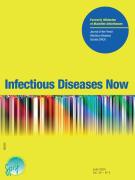Real-world use, effectiveness, and safety of ceftazidime-avibactam: Results of the French cohort OZAVIE - 12/03/25
 , Virginie Vitrat b, Vincent Le Moing c, Philippe Bret d, Yves Brault d, William Greenwood d, Marie-Charlotte Chopin e, Eric Vicaut f, Philippe Montravers g, Pierre Tattevin h, Alexandre Bleibtreu i
, Virginie Vitrat b, Vincent Le Moing c, Philippe Bret d, Yves Brault d, William Greenwood d, Marie-Charlotte Chopin e, Eric Vicaut f, Philippe Montravers g, Pierre Tattevin h, Alexandre Bleibtreu ion behalf of the OZAVIE research group1
Highlights |
• | In 257 adult patients treated with ceftazidime-avibactam (CAZ-AVI), the success rates were high (from 63.4% to 79.0% according to the definition). |
• | In the largest reported number of patients infected with Pseudomonas and treated with CAZ-AVI, the success rates were also high (65.6% to 81.7%). |
• | Success rates were also high in other sites of infection, or when CAZA-AVI was combined with aztreonam in case of metallo-beta-lactamase. |
• | The observed global resistance rate following CAZ-AVI treatment was 5.4%. |
• | CAZ-AVI was also well tolerated, with adverse events (AEs) possibly related in 17.4%, including serious AEs in 6.2% of the patients. |
Abstract |
Background |
While difficult-to-treat multidrug-resistant Gram-negative bacteria infections increase over time, the real-world effectiveness, use, and safety of ceftazidime-avibactam (CAZ-AVI) for treating hospitalized patients was assessed in 41 French centers.
Procedures |
OZAVIE was a prospective, multicenter, observational study conducted between March 2019 and November 2021. Hospitalized adult patients having initiated CAZ-AVI for infections within 14 days before enrolment were eligible. Demographic, clinical, microbiological, and therapeutic data were collected. Outcome was categorized as “failure” if the patient died from the initial infection, or if the infections persisted and required another antibiotic or surgery, or if CAZ-AVI was discontinued due to intolerance, and as “global success” otherwise. Patients whose outcome was not “failure”, did not die and required no other antibiotics during the index hospitalization were categorized as “therapeutic success”.
Results |
257 patients were enrolled: 76 females/181 males, mean age 58.4 years, with diabetes (30.0 %), chronic renal failure (25.7 %), end-stage liver disease (9.3 %) and/or immunocompromised (31.1 %). CAZ-AVI was prescribed for nosocomial pneumonia (34.2 %), complicated urinary tract infections (17.5 %), complicated intra-abdominal infections (14.8 %) and other specified sites (27.6 %). The main pathogens were Pseudomonas aeruginosa (52.4 %), Klebsiella spp. (34.9 %), Enterobacter spp. (18.4 %). Global and therapeutic successes were observed in 79.0 % and 63.4 % of patients, respectively, and 28-day mortality was 20.2 %. Overall, adverse events possibly related to CAZ-AVI were reported in 17.4 % of patients, including serious AEs in 6.2 %.
Conclusions |
CAZ-AVI is effective and well tolerated for treating various infections – including difficult-to-treat infection sites – and for treating various infections strains, including Pseudomonas aeruginosa and Enterobacter spp.
Le texte complet de cet article est disponible en PDF.Keywords : Ceftazidime-avibactam, Multidrug-resistant bacteria, Gram-negative bacteria, Prospective study, Effectiveness
Plan
Vol 55 - N° 2
Article 105036- mars 2025 Retour au numéroBienvenue sur EM-consulte, la référence des professionnels de santé.
L’accès au texte intégral de cet article nécessite un abonnement.
Déjà abonné à cette revue ?

